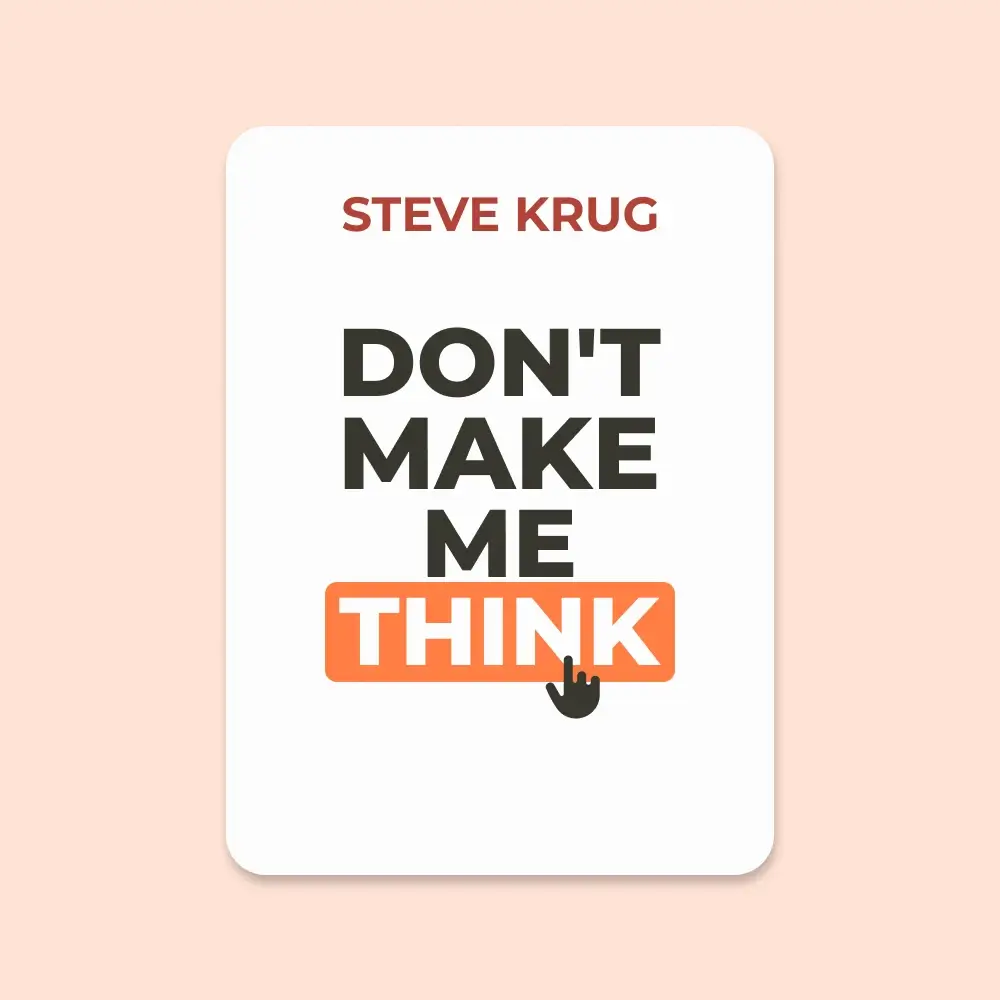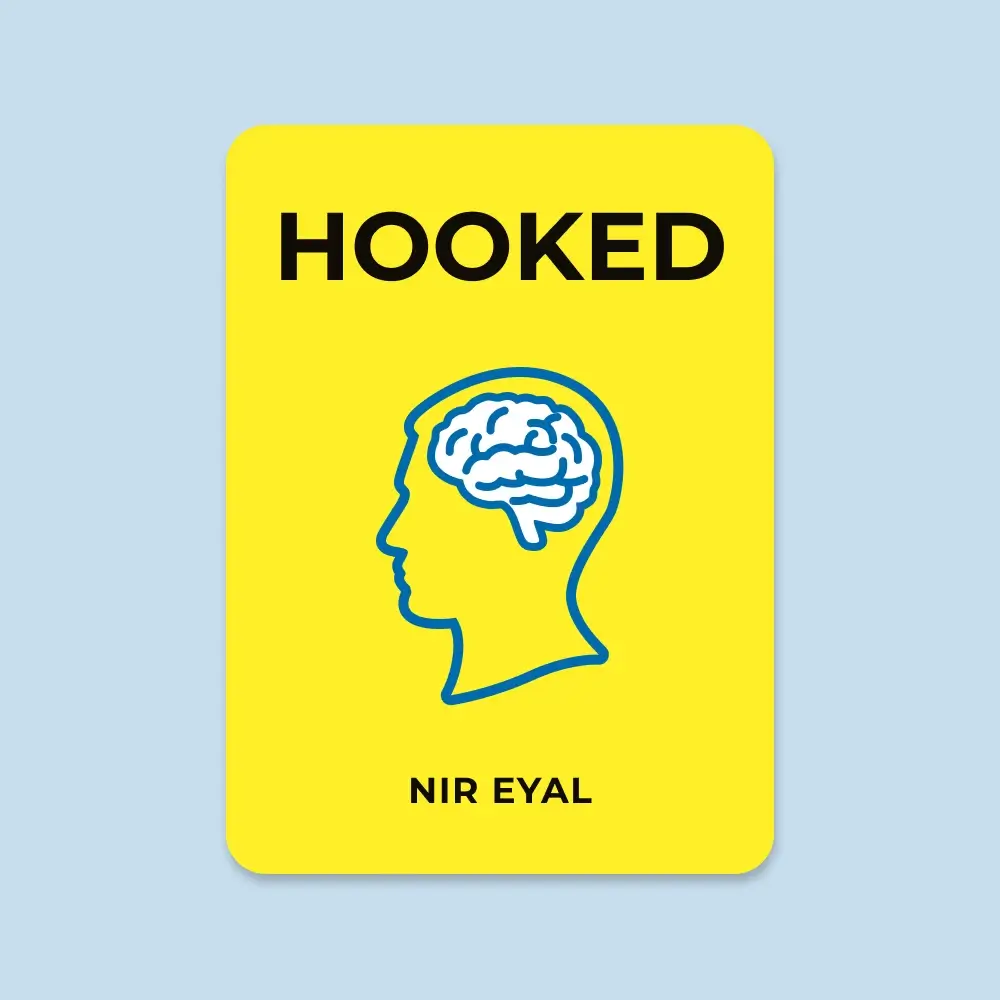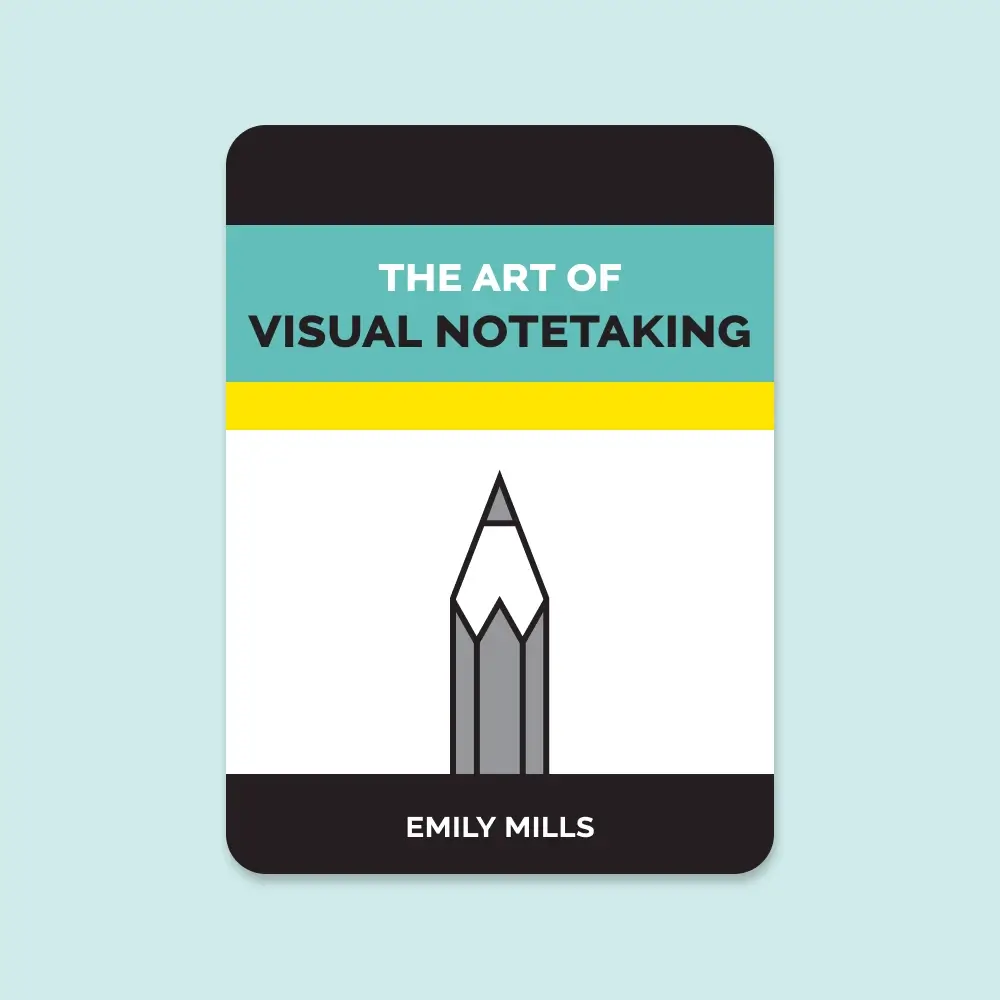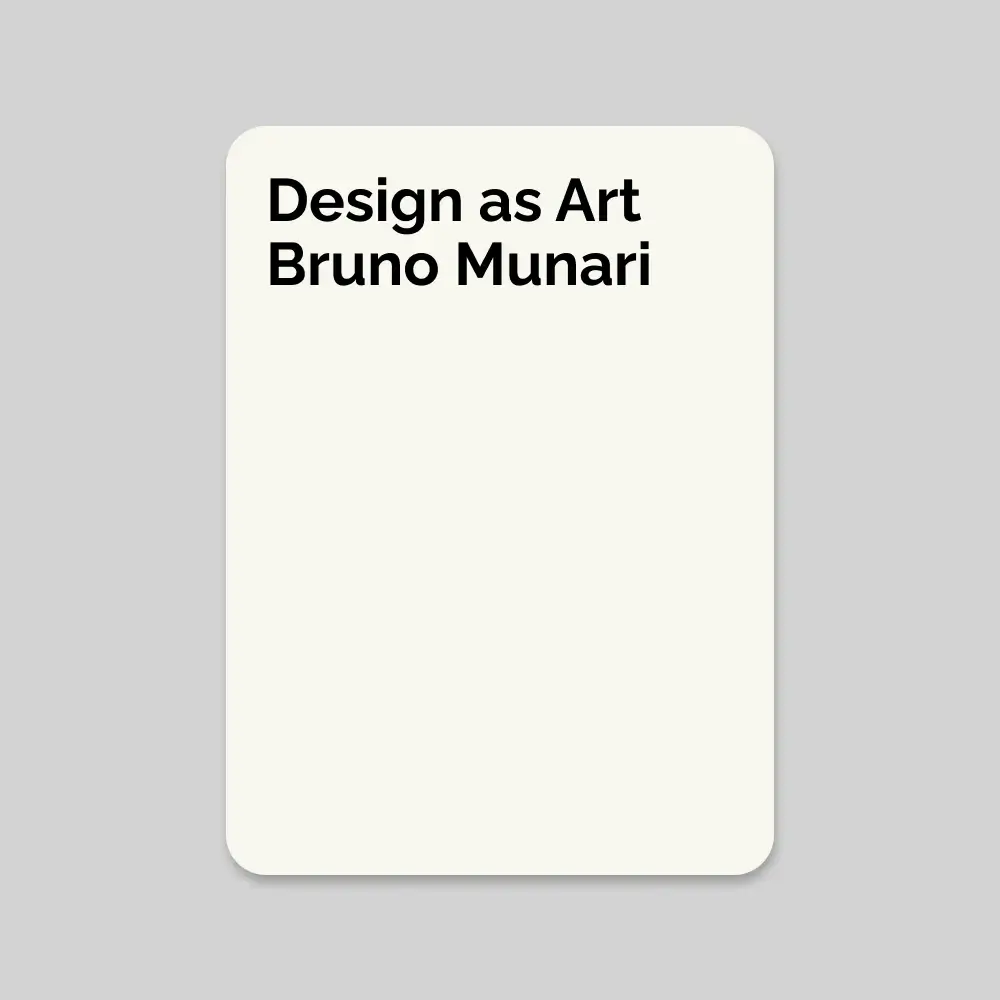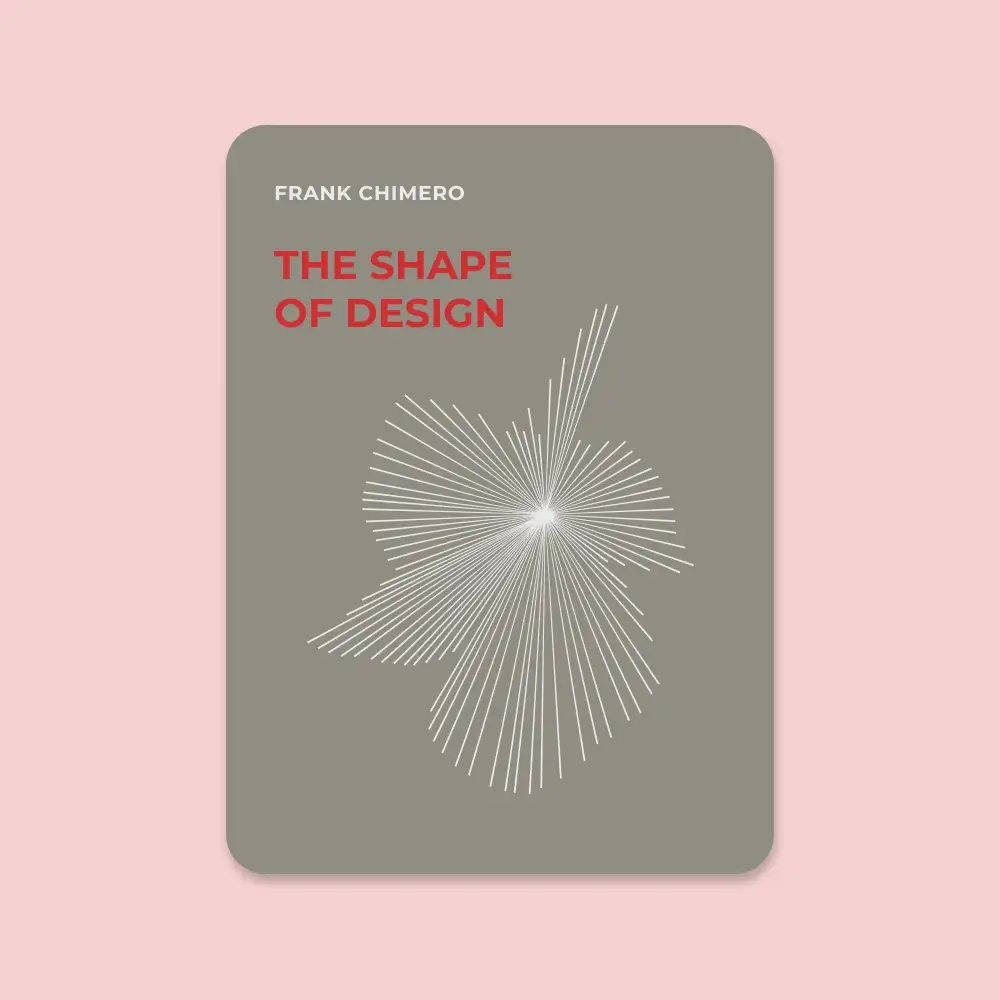
The Shape of Design
🎯 Purpose Over Polish − Extraordinary craft without clear objectives leads nowhere. Design must be guided by intent, not just execution.
🧱 Creative Blocks Are Imbalances − Blocks happen when “how” outweighs “why”—when we have skills but no purpose, or ideas without the ability to realize them.
🔄 Design Is Transformation − Design isn’t just styling—it’s the act of reshaping circumstances and solving problems through thoughtful change.
🌟 Beauty ≠ Utility − A beautiful object isn’t necessarily more functional. True design elevates both form and function in harmony.
🌱 Ideas Start Fragile − Early-stage ideas need nurturing. As they become more real, they must stand up to increasing scrutiny.
🪟 Constraints Are Catalysts − Limitations spark creativity. They remove ambiguity and suggest where to begin, letting the act of making lead the way.
🔗 Message, Tone, Format − Good design balances what is said (message), how it’s said (tone), and the container it lives in (format). All three must align.
⚖️ Designers Are Translators − The designer bridges audience needs with creative intent—acting as a mediator between the message and its presentation.
🕵️ Problem Finding Matters − Designers must patiently reveal the true nature of a problem before solving it—just like getting to know a person.
📖 Storytelling Creates Connection − A well-told design story connects speaker and listener, transforming individual insight into shared experience.
🎁 Design Must Move − Design only fulfills its purpose when shared. Like a gift, it must be passed on to matter.
⏳ Attention Is Sacred − Attention is rare, finite, and valuable. Great design respects it—and earns it.
🤝 Interdependence Is Power − We grow by helping each other. The role of design is to meet needs we can’t meet alone, and that’s a profound privilege.
🌍 Shape the World, Gently − We live in one world but imagine another. Through design, we move the real closer to the ideal.
-
If an artist or designer understands the objective, he can move in the right direction, even if there are missteps along the way. But if those objectives are left unaddressed, he may find himself chasing his own tail, even if the craft of the final work is extraordinary.
-
Creative people commonly lament about being “blocked,” perpetually stuck and unable to produce work when necessary. Blocks spring from the imbalanced relationship of How and Why: either we have an idea, but lack the skills to execute; or we have skills, but lack a message, idea, or purpose for the work.
-
Design is a field of transformations concerned with the steps we take to mold our situations.
-
A polished axe does not chop better, just as the refined design of a lamp does not necessarily light a room more fully. Beauty is a special form of craft that goes beyond making something work better.
-
The more real an idea becomes, the less suspension of disbelief is required, and the more criticism it should withstand. But all ideas, both good and bad, start young and fragile.
-
Limitations allow us to get to work without having to wait for a muse to show up. Instead, the process and the limitations suggest the first few steps; after that, the motion of making carries us forward.
-
Limitations narrow a big process into a smaller, more understandable space to explore.
“Design is the method of putting form and content together.” — Paul Rand
-
All design work seems to have three common traits: there is a message to the work, the tone of that message, and the format that the work takes. Successful design has all three elements working in co-dependence to achieve a whole greater than the sum of the individual parts.
-
A wise design choice finds the tone that can slip between the content and format, snap into place, and bond one to another.
-
The designer, therefore, acts as a proxy for the audience’s needs while arguing for her own creative concerns.
-
It is the designer’s job to figure out a way to have a problem show its actual self so that he can respond to the truth that has emerged. Getting to know a problem is a bit like getting to know a person: it’s a gradual process that requires patience, and there is no state of completion.
-
A good story speaks to the experience of someone else, but in its telling creates another shared experience for the speaker and listener.
-
When the balance is just right, we hardly realize it’s there.
-
Like a gift, design requires movement; the work must be shared, the ideas must move. A business card that stays in its owner’s pocket is no good.
-
Attention may seem like an easy gift to give, but it is not; it is the scarcest resource available because its quantities are limited and nonrenewable. We can’t produce more attention, and there are ever more things vying for it each day.
-
We are dependent on each other in this way – we finish each other’s sentences, fill one another’s needs, and help each other to become better. A person is not a closed system, they can never be fully self-sufficient. We need each other because we cannot make everything ourselves. Everything was invented, but it was not done alone, so we should revere the times we are able to fill this complementary role for others, and cherish when others do so for us. It’s the words of others that teach us to speak, the expressions of life by other people that teach us how to express ourselves. The great opportunity of design is that we are frequently afforded the privilege to fill another’s needs and desires.
-
There is the world we live in and one that we imagine. It is by our movement and invention that we inch closer to the latter. The world shapes us, and we get to shape the world.
